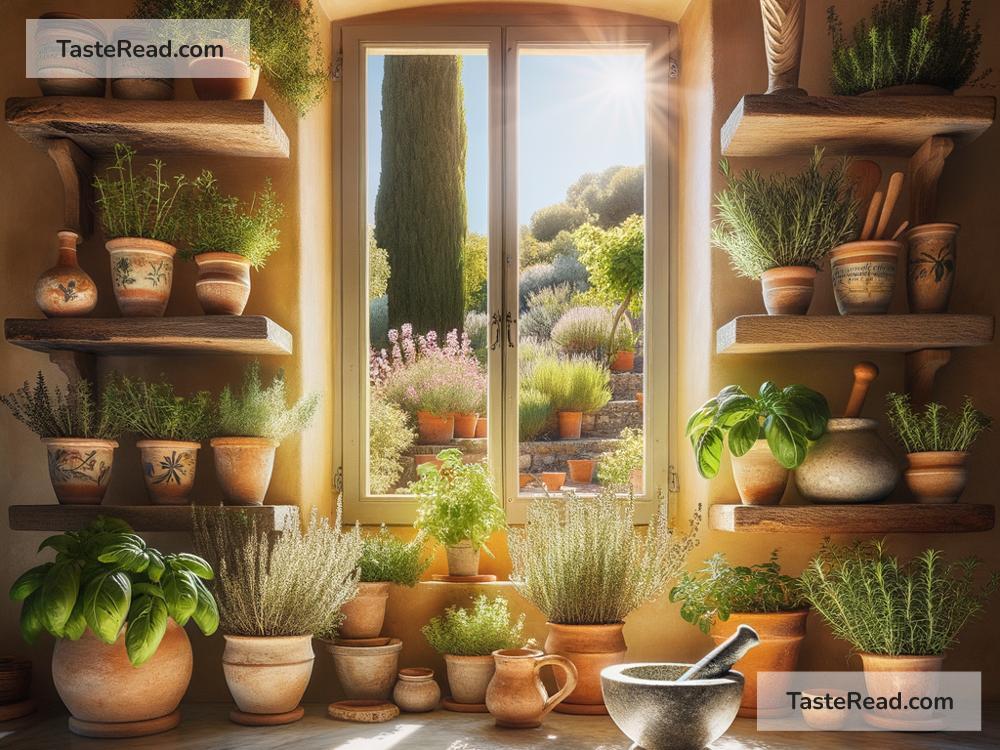Unveiling Aromatic Herb Gardens in Provençal Kitchens
Imagine stepping into a charming kitchen in Provence, France. The sunlight spills over rustic countertops, and the air is filled with the scent of fresh thyme, rosemary, and lavender. Provencal kitchens are a beautiful blend of simplicity and tradition, and at the heart of these kitchens lies a treasure trove of aromatic herbs. Today, we are going to explore how herb gardens have become an essential part of Provençal cooking and how you can bring a touch of Provence into your own kitchen.
What Makes Provence Special?
Provence is a stunning region in the south of France famous for its picturesque villages, lavender fields, and warm Mediterranean weather. The lifestyle in Provence is closely tied to nature, and this appreciation for natural beauty extends deeply into its cuisine. Using fresh ingredients, particularly herbs, is key to creating the wholesome dishes that the region is known for.
In Provence, herbs don’t just add flavor to food—they are part of the cultural identity. These fragrant plants grow with ease in the sunny climate of the region and are often planted right outside kitchens for convenient access. Each herb brings its bold essence to the dining table, making culinary experiences unforgettable.
The Staples of a Provençal Herb Garden
Provençal herb gardens are filled with plants that thrive in the Mediterranean climate. Here are some of the most commonly used herbs in Provençal cooking:
- Thyme: This versatile herb has a woody aroma and pairs beautifully with meats, stews, and vegetables. It’s a cornerstone of many French dishes.
- Rosemary: Known for its pine-like fragrance, rosemary is perfect for roasted meats and potatoes. It also adds depth to soups and sauces.
- Lavender: Famous worldwide as an ornamental flower, lavender is often used in Provence to flavor desserts and cheeses. Its subtle floral aroma adds a unique touch to dishes.
- Sage: Sage has a slightly peppery taste and is often used in stuffing, roasted meats, or alongside butter to enhance its richness.
- Basil: While basil is often associated with Italian cooking, it plays an important role in Provençal recipes too, especially in tomato-based sauces and salads.
- Oregano and Marjoram: These herbs are closely related and frequently used in meat marinades, casseroles, and vegetable dishes.
- Tarragon: Tarragon has a hint of licorice and adds complexity to delicate sauces like the classic French béarnaise.
These herbs are often combined to create Herbes de Provence, a famous mix of dried herbs that embodies the culinary spirit of the region. A typical blend includes thyme, rosemary, oregano, marjoram, and occasionally lavender.
Fresh Herbs in Provençal Cooking
One of the reasons why fresh herbs are so important in Provençal cuisine is because they elevate simple ingredients into exceptional dishes. Provence is known for its straightforward recipes, including ratatouille, bouillabaisse (a hearty fish stew), and tapenade (a flavorful olive spread). These dishes rely on fresh herbs to pack a punch of flavor without overwhelming the eater.
For example, think of ratatouille: a classic dish made with vegetables like zucchini, eggplant, and tomatoes. A sprinkle of thyme and oregano transforms the dish into a savory masterpiece that celebrates the natural flavors of the ingredients. Similarly, rosemary and lavender can add an unexpected but delightful twist to roasted potatoes, leaving you yearning for more.
Growing Your Own Herb Garden
You don’t have to live in Provence to grow your own aromatic herb garden; you can create one in your backyard, balcony, or even on your kitchen windowsill. These herbs are surprisingly hardy and don’t require a lot of maintenance. Here’s how you can get started:
- Choose Your Herbs: Start with a few basics like thyme, rosemary, and basil. These herbs are beginner-friendly and extremely versatile.
- Use Pots or Raised Beds: Herbs grow well in pots, so you can keep them inside or move them around as needed. Make sure to choose containers with good drainage.
- Provide Sunlight: Most herbs need plenty of sunlight to thrive. Place them in a sunny spot where they can soak up light for at least 6 hours a day.
- Water Sparingly: Herbs like rosemary and thyme prefer dry soil, so be careful not to overwater them. Basil, however, likes soil that’s slightly moist.
- Harvest Regularly: Snip off leaves or stems regularly to encourage new growth. Plus, you’ll always have fresh herbs at hand for cooking!
Growing your own herbs brings joy and convenience to cooking. Imagine plucking a sprig of rosemary or a few leaves of basil while prepping tonight’s dinner—it adds a whole new level of freshness to your meals.
A Taste of Provence in Your Kitchen
Incorporating fresh herbs into your cooking is a simple way to bring the flavor of Provençal kitchens into your home. Whether you’re enjoying a bowl of ratatouille or crafting your own version of Herbes de Provence, the addition of aromatic herbs will transport you straight to the sunny countryside of southern France.
Provençal kitchens remind us of the beauty in simplicity and the magic of fresh ingredients. So, what are you waiting for? Start growing your own aromatic herb garden today and savor the flavors of Provence right in your own kitchen!


